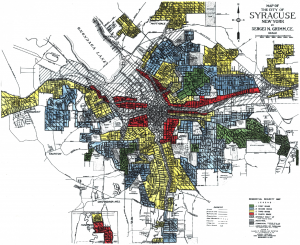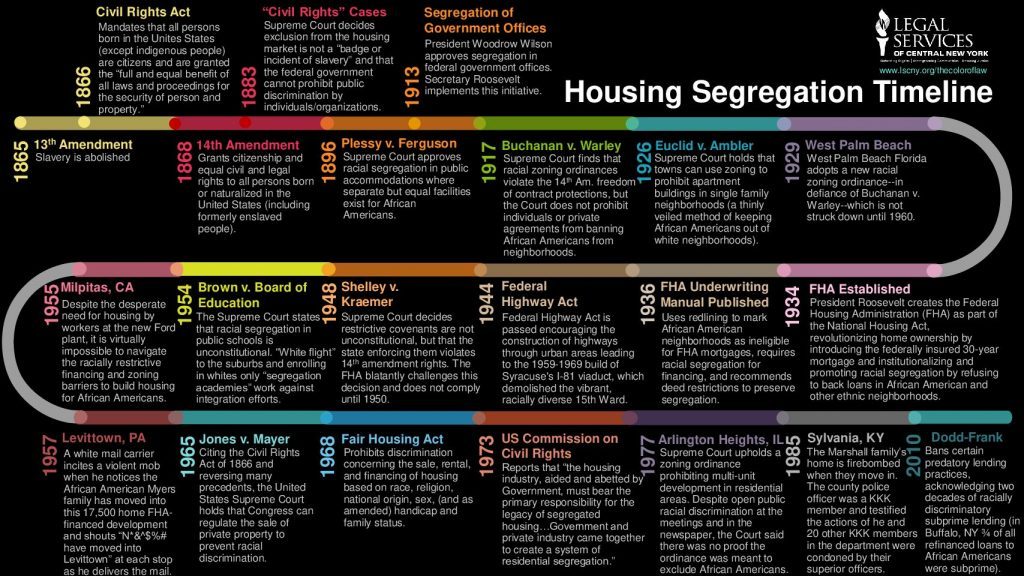
This is part two of a two-part series that takes an in-depth look at evictions and how they contribute to the health of Central New York, particularly during the COVID-19 pandemic, which has led to a financial crisis for many families. Read more to see how both renters and landlords can avoid evictions and create a better region with higher property values, safer housing and more economic opportunities. Click HERE to read the first part of the series.
Evictions aren’t always avoidable, but in some cases the tenants and landlords just need more information in order to prevent a disaster. Along with ensuring access to safe housing and preventing homelessness, helping residents avoid evictions in Central New York is a major goal for both the Volunteer Lawyers Project of Onondaga County (VLP) and The Syracuse Tenants Union (STU). Both organizations are distributing information and offering counsel to help tenants live in sustainable housing and avoid red marks on their housing resumés, especially during this turbulent time of a national pandemic and financial crisis.
STU is in the process of creating a tenants’ handbook that gives specifics to rental property tenants on how to make sure they are protected. The handbook, which is currently in production, offers a comprehensive list of what the tenants should know, including a description of their rights, how to seek legal counsel before they have a problem and the importance of keeping receipts and documenting interactions with landlords and Code Enforcement.
VLP offers trainings and legal counsel to residents facing eviction, as well as representation in court. If landlords assist their tenants by recommending counsel from VLP, they often can work out an agreement in which no one ends up in court. “The big goal for us is homelessness prevention,” said Sally Curran, executive director of VLP.
There are many complex laws and proceeds that the two organizations can help residents navigate.
For instance, the 2019 Housing Security and Tenant Protection Act was put into place to help families avoid homelessness and desperation by giving them additional time to plan prior to eviction. The new act gives tenants a 14-day warning, then 10-17 days of notice, a 14-day court adjournment and finally 14 days for tenants to leave. The act was designed to help residents comfortably relocate after researching a new property and building up funds. Previously, tenants were only allowed a few days of nonpayment before eviction proceedings began.
Any eviction can create issues if the tenant tries to rent or buy in the future. The eviction process for both tenants and landlords is time consuming and has major cost implications. Landlords nearly always have legal representation, yet the tenants rarely have counsel because they often can’t afford it. The outcome is that tenants, even if they show up to plead their case, may owe many months’ worth of back rent. The tenants will be asked to present documentation and receipts, yet without them they may not be able to prove hardship. “Having representation in court substantially changes the outcome for the tenants,” said Curran. “The misbalance of power without legal representation becomes really profound.”
After an eviction, tenants may owe thousands in back rent, but that could potentially be reduced if they have access to legal counsel. They also may not receive their hefty security deposit back (even if the code violations existed before they moved in originally), making it that much harder to find a new home. This is how a family may hurriedly choose another poorly kept property and continue the cycle of unreliable housing, putting their confidence and well-being at further risk.
The New York State Tenant Safe Harbor Act, which was established during the COVID-19 crisis to place a temporary moratorium on evictions, is not a free ride. It simply means that you can’t be evicted until after the pandemic crisis has passed. The moratorium is helpful in that it is specifically designed to keep people out of a homeless situation during a pandemic. According to the moratorium, which started on March 16, 2020, no renter who is unable to pay their rent due to circumstances caused by COVID-19 will be evicted until Governor Cuomo changes the terms. The end date of the moratorium has been pushed forward to January 1, 2021 at the time of this article’s release.
The moratorium is not a rent waiver, despite popular belief. If a tenant can pay their rent, then they should pay. At the end of the moratorium, VLP expects that its services will be even more necessary because these renters will need to provide documentation in court proving that it was an unavoidable hardship that caused their non-payment.
Regardless, tenants must pay their unpaid rent at some point. The Act states: “A court can never use unpaid rent that accrued during the COVID-19 period as the basis for a non-payment eviction of a financially burdened tenant; however, a court could impose a money judgment.” While the moratorium is helpful, there’s little chance that people can navigate this information well. Palmer Harvey of The Syracuse Tenants Union states, “The written legal terms of the moratorium don’t make sense to the average person. They need a version in laymen’s terms.” There are currently one million people in NYS who need rental assistance.
In addition, the Coronavirus Aid, Relief, and Economic Security (CARES) Act may also provide additional funding to offset the burden of unpaid rent. The CARES Act was passed by Congress and signed into law on March 27, 2020. This economic relief package delivers this administration’s commitment to protecting the public from the health and economic impacts of COVID-19. The CARES Act provides economic assistance for workers, families and small businesses. The CARES Act should help those who are able to sufficiently document their inability to pay their rent, but with so many in New York State who need rental assistance, the money could run out. Having legal representation for an eviction moratorium case will benefit the tenant greatly.
Legal representation from a case manager will reduce confusion around what could be a messy legal situation. Avoiding evictions, especially during a pandemic, helps to create a safe and healthy community for everyone, including landlords.
Landlords can help by addressing a situation before it turns into a legal undertaking; everyone will save time and money. Landlords can refer their tenants to VLP to speak with a case manager. Additionally, on September 14, 2020, Syracuse passed an additional renter protection: Now, landlords who have failed to register their one-and-two-family rental homes will be barred from evicting tenants if they do not participate in in the City’s rental registry.
Recently, the COVID-19 Community Support Fund provided grants to VLP and STU. STU is creating educational materials regarding evictions and renters’ rights. Both VLP and STU required personal protective equipment in order to meet with clients and conduct virtual court cases (in which the attorney is present with their client while the judge and landlord are virtual). VLP will also hire and pay law students to help with legal and pre-eviction counsel.
The COVID-19 Community Support Fund is a partnership of the Central New York Community Foundation, The United Way of Central New York, the Allyn Family Foundation, The Dorothy and Marshall M. Reisman Foundation, the Health Foundation for Western & Central New York and the City of Syracuse & Onondaga County. They established the Fund to support nonprofit organizations working with communities who are disproportionately impacted by economic consequences of the coronavirus pandemic. To date, the fund has raised over $1.8 million from which vital funding is rapidly deployed to support the region’s greatest needs.
Curran states, “Fewer evictions means that in the long-term, Syracuse property values will go up, there will be more economic opportunities and the unhealthy wealth gap in Central New York will be lessened.”
For more information on STU, email syrtenantsunion@gmail.com or visit their Facebook page.
To contact the Volunteer Lawyers Project for legal counsel, visit their website or call 315.471.3409.










Recent Comments